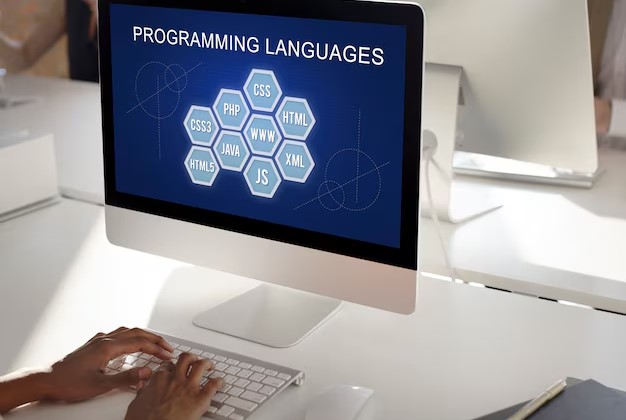Steps by Steps To Become A Full-Stack Developer
— April 17, 2020Understanding the Role of a Full-Stack Developer
A full-stack developer manages both the front-end and back-end development of a web application. This role requires expertise in creating the visible part of an application (front-end) that users interact with and the hidden infrastructure (back-end) that processes user commands and manages data. Front-end is often referred to as the client side, while back-end corresponds to the server side. Back-end functions include handling user authentication, configuring servers, managing databases, and executing business logic.
Full-stack development is a prominent and highly valued profession in information technology. The demand for full-stack developers continues to grow as organizations seek versatile professionals who can handle various aspects of web application development.
Key Technical Skills for Full-Stack Developers
To become a proficient full-stack developer, you need a solid understanding of both fundamental and advanced technical skills.
Core Front-End Skills
Mastery of CSS, HTML, and JavaScript is essential.
- CSS (Cascading Style Sheets): CSS defines the appearance of HTML elements across different devices and media. It allows developers to create visually appealing and responsive web pages.
- HTML (Hypertext Markup Language): HTML provides the structure for web content, enabling the placement of text, images, and other elements.
- JavaScript: JavaScript is a high-level programming language essential for creating interactive and dynamic features on web pages.
Back-End Programming
While front-end skills create the interface, back-end programming powers the logic and functionality behind a web application. Common back-end languages include:
- Java: This object-oriented, platform-independent programming language is widely used for developing server-side applications. Java code can run on any device with a Java Virtual Machine.
- Python: Python is a versatile, high-level programming language used for various applications, from small scripts to large-scale web frameworks.
- PHP (Hypertext Preprocessor): PHP is a server-side scripting language designed to manage dynamic content, databases, and server communication.
- Ruby on Rails: This server-side web framework simplifies web application development by offering built-in solutions for common tasks.
- SQL (Structured Query Language): SQL is used to query, manipulate, and manage data in relational databases.
Additional Skills
- Version Control: Understanding tools like Git ensures efficient collaboration and code management.
- APIs and Third-Party Services: Familiarity with APIs enables seamless integration with external tools and services.
- Database Management: Knowledge of database design and optimization is critical for efficient back-end operations.
- Hosting and Deployment: Skills in deploying and hosting applications are necessary for making them accessible to users.
Step 1: Master the Basics of Web Programming
To become a full-stack developer, begin by building a strong foundation in core web technologies.
Learn how CSS and HTML are used to define and structure web pages. These languages are the backbone of web design and are essential for creating a functional front-end. Complement your knowledge with JavaScript to add interactivity and handle user inputs.
Familiarize yourself with back-end languages such as Java, Python, PHP, Ruby on Rails, and SQL. Each of these languages plays a specific role in back-end operations. For instance, Java is excellent for building scalable applications, while Python is renowned for its simplicity and versatility.
Step 2: Continuously Update Your Knowledge
Technology evolves rapidly, and staying current is essential for success. Full-stack developers should be aware of the latest updates and trends in programming and development.
Begin with a deep understanding of the basics, such as HTML, CSS, and JavaScript. Then expand your expertise by exploring advanced topics, including server management, data structures, and algorithms.
Test your skills by building small projects. For instance, create test pages using JavaScript to reinforce your learning and apply theoretical concepts practically.
A full-stack developer must understand the connections between different components of a web application. This knowledge allows you to integrate various elements effectively into a cohesive system.
Step 3: Develop an In-Depth Understanding of Technologies
While full-stack developers need a broad knowledge base, they should also master at least one technology. For instance, if you choose PHP as your specialization, ensure you understand its nuances and best practices. Similarly, if you prefer Java, develop expertise in its advanced concepts and frameworks.
This dual approach—broad knowledge with specialized expertise—makes full-stack developers highly versatile and valuable. Gaining proficiency in a single technology allows you to deliver exceptional work while maintaining the flexibility to adapt to other technologies when needed.
Step 4: Enroll in Web Development Courses
Formal education can significantly enhance your learning process. Online and offline courses provide structured content, practical examples, and expert guidance. Many platforms, such as Codecademy and Treehouse, offer full-stack development courses tailored to various skill levels.
When selecting a course, prioritize institutions that employ knowledgeable instructors capable of clarifying complex topics. A good course will provide a balance between theoretical knowledge and practical application, ensuring you are well-prepared for real-world challenges.
Step 5: Gain Practical Experience
Applying theoretical knowledge in practical scenarios is crucial for mastering full-stack development. Work on projects that involve the end-to-end creation of web applications. Focus on key aspects such as:
- Structuring your code effectively.
- Choosing appropriate data structures for various tasks.
- Organizing files logically.
- Balancing client-side and server-side tasks.
- Hosting large media files efficiently.
Practical experience helps you build a portfolio showcasing your capabilities, which is invaluable when applying for jobs. Many companies value demonstrated skills over formal qualifications, especially in coding and application development.
Step 6: Take on Additional Responsibilities
If you are employed, seek opportunities to work on tasks outside your core responsibilities. Taking on diverse assignments allows you to expand your skill set and demonstrate initiative. These experiences enhance your problem-solving abilities and make you a more versatile developer.
Conclusion
Becoming a full-stack developer requires dedication, continuous learning, and hands-on practice. While the initial stages of your journey may seem overwhelming, persistence and experience will make the process more manageable. By mastering technical skills, staying updated with industry trends, and applying your knowledge in practical scenarios, you can excel as a full-stack developer.






